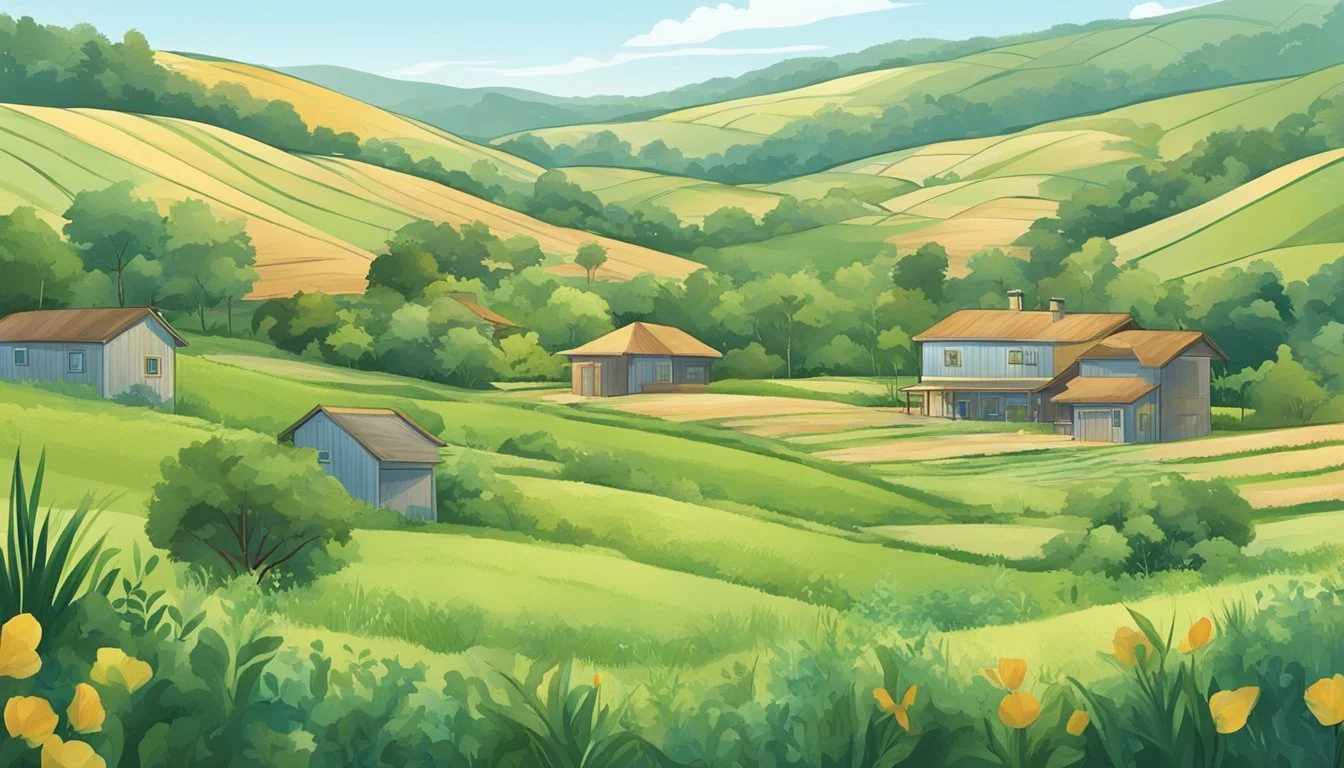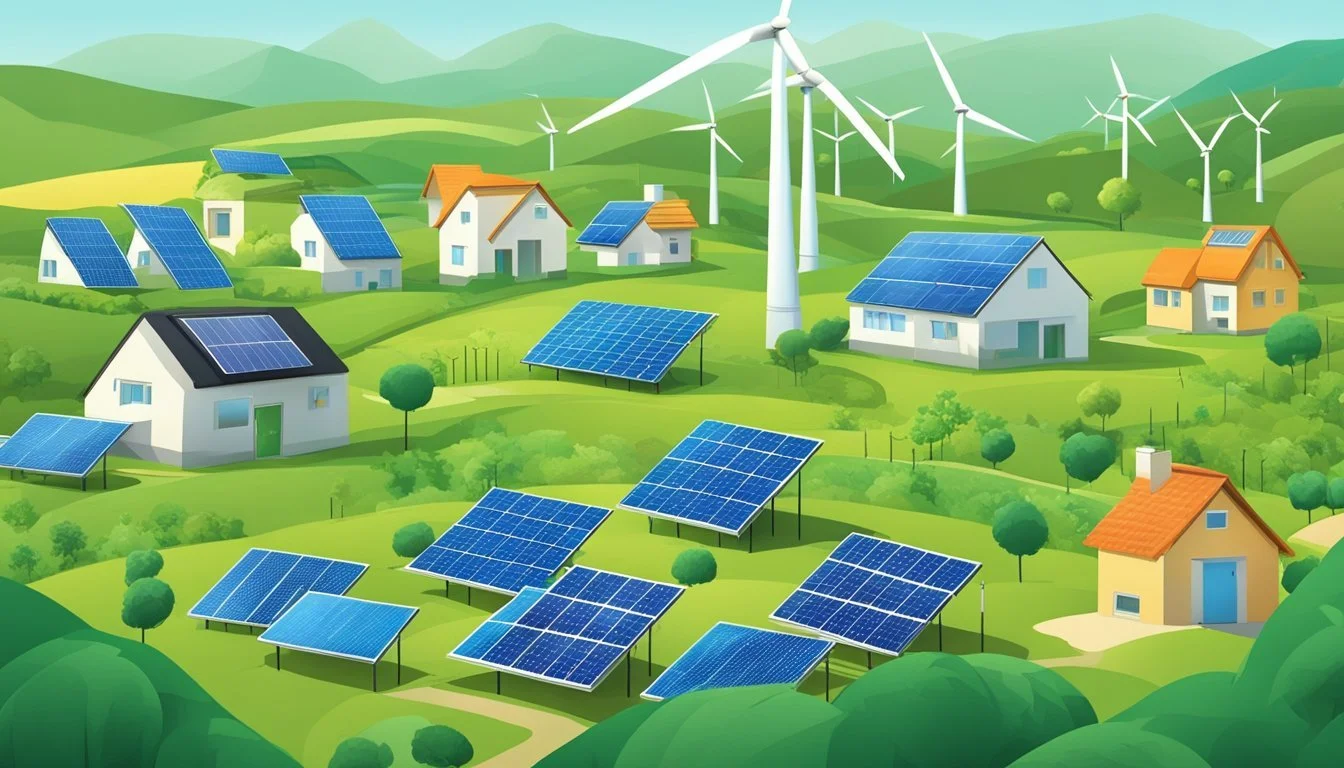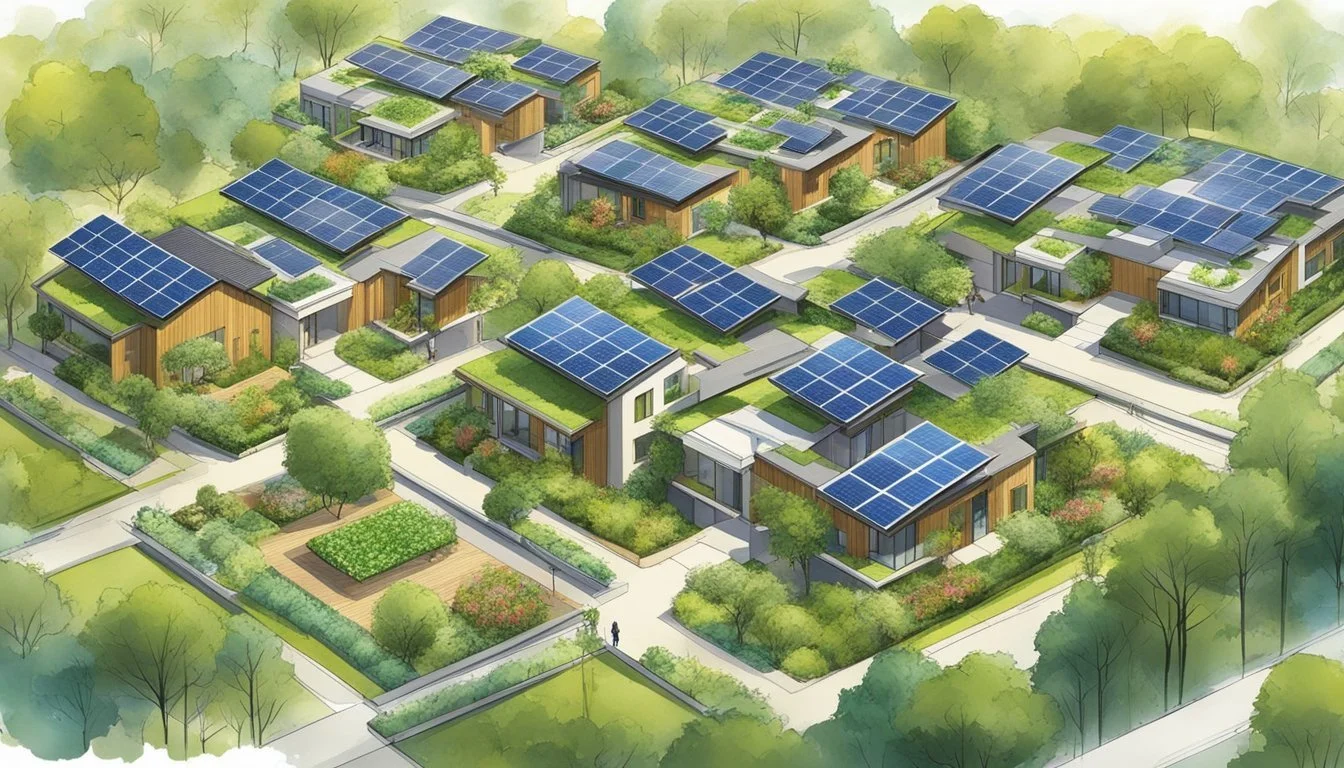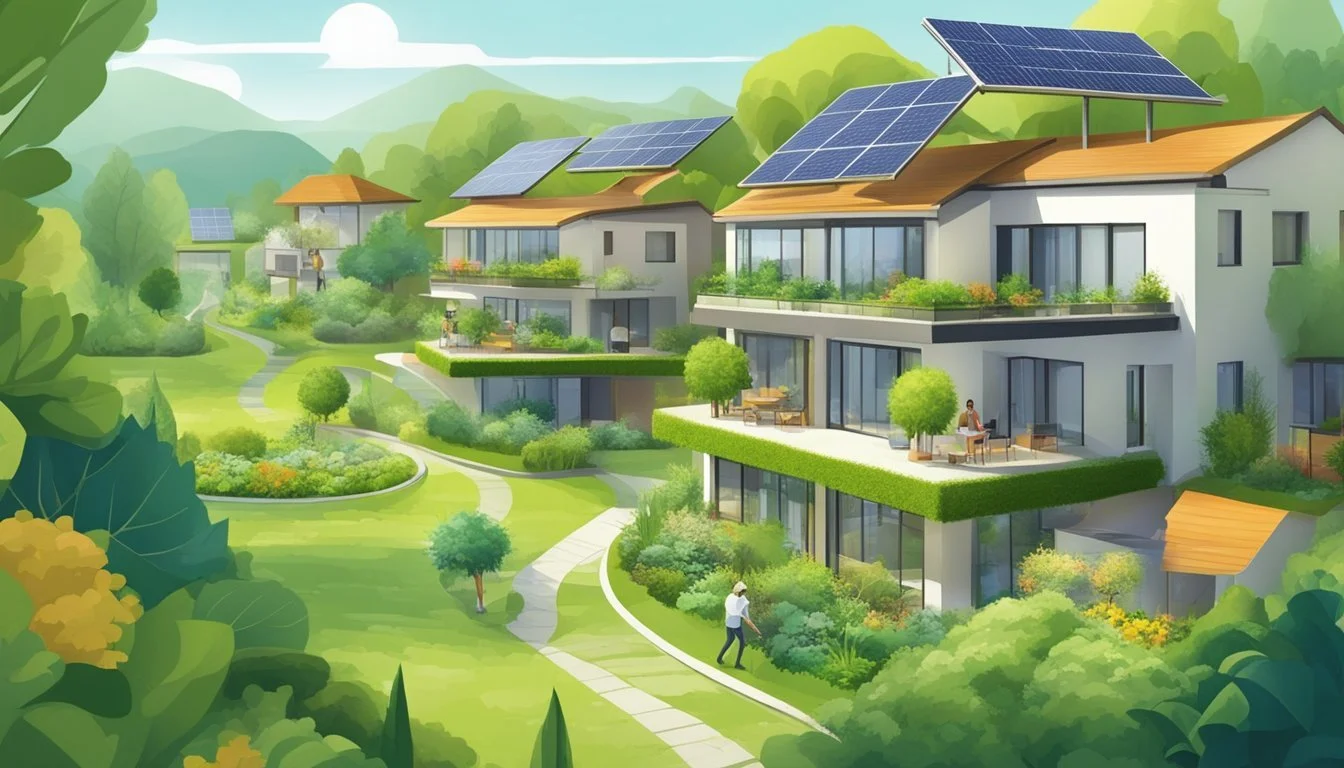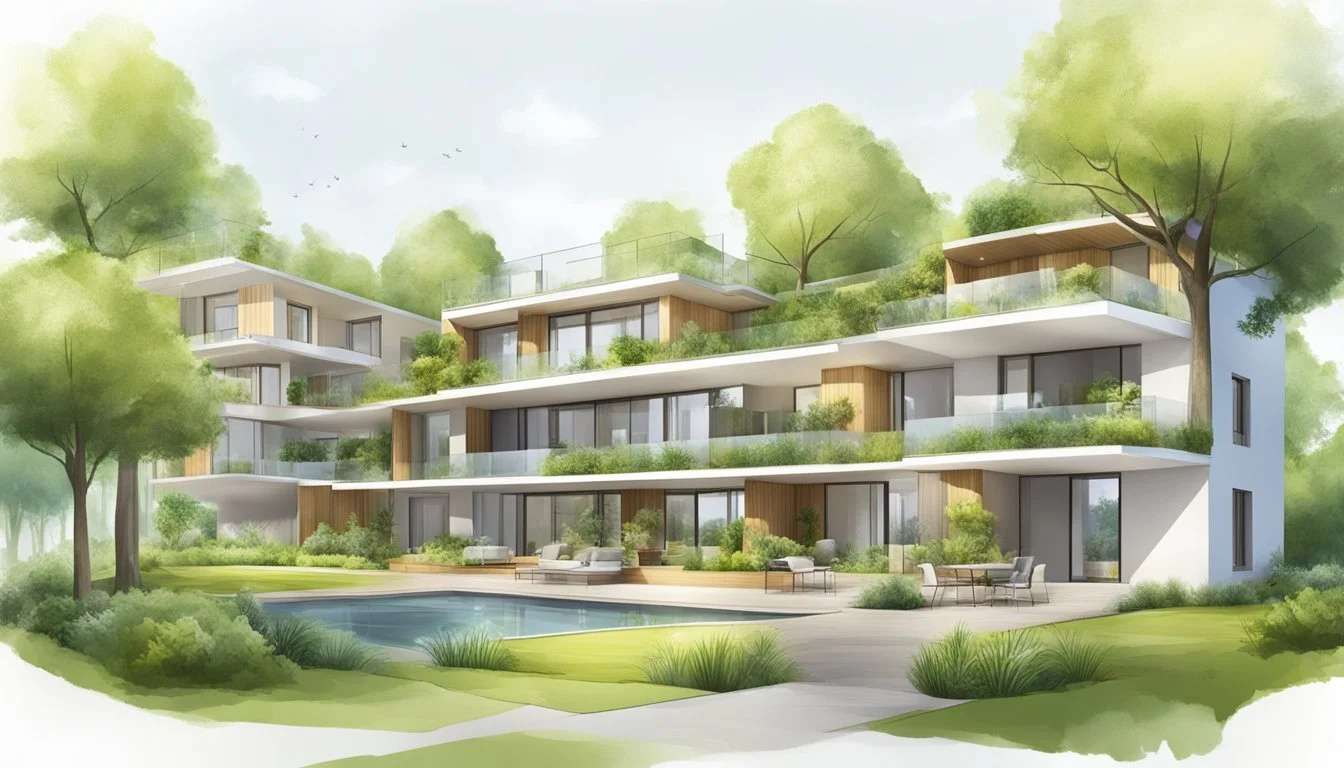Free Land for Eco-Friendly Housing
Funding Opportunities and Project Guidelines
Living sustainably is more accessible than ever, with innovative green building projects offering free land for eco-friendly housing. These opportunities provide a significant leap towards reducing one’s carbon footprint while embracing a more environmentally conscious lifestyle. This initiative makes it feasible for individuals to construct homes that prioritize energy efficiency, utilize sustainable materials, and incorporate green technologies without the financial strain of land acquisition.
Communities around the world are recognizing the importance of sustainable living, and free land programs are part of this growing movement. Green building projects like those mentioned are examples of how urban development can integrate with nature, fostering a healthier environment. From bamboo homes that sequester carbon dioxide to energy-efficient houses with living roofs, these designs demonstrate practical and beautiful ways to live in harmony with our planet.
The appeal of free land for eco-friendly housing lies not only in the cost savings but also in the opportunity to be part of a community committed to sustainability. By participating in these innovative projects, individuals support broader environmental goals while enjoying the benefits of a thoughtfully designed, green home. This trend signals a shift towards more sustainable and inclusive urban planning, making it an exciting time for those interested in green architecture and eco-conscious living.
The Role of Land in Sustainable Housing
The availability and accessibility of land, regulatory policies, and ecological site selection significantly impact the development of eco-friendly housing projects aimed at addressing the global housing crisis and promoting sustainability.
Accessibility and Availability
Land accessibility and availability are crucial elements in sustainable housing. Free land initiatives can help mitigate the housing crisis by offering spaces for eco-friendly housing projects. Governments and organizations often allocate underutilized or degraded lands for such purposes.
Key considerations:
Location: Preferably near infrastructure and amenities.
Cost: Free or low-cost land reduces project expenses, making housing more affordable.
Community Impact: Integrating projects within communities can boost local economies and create cohesive environments.
Regulation and Policy Drivers
Regulatory frameworks and policy drivers play a pivotal role in sustainable housing. Zoning laws and building codes must support eco-friendly designs and the use of sustainable materials. Policies encouraging the use of free land for housing projects can expedite development and enhance affordability.
Important policy aspects:
Permit Processes: Streamlined and supportive policies reduce barriers to development.
Incentives: Tax breaks, grants, and subsidies for sustainable building practices.
Compliance: Standards for energy efficiency, resource utilization, and environmental impact.
Ecological Site Selection
Ecological considerations are fundamental in selecting land for sustainable housing. Sites must be evaluated for their environmental impact, biodiversity, and resilience to climate change. Choosing locations that minimize ecological disruption is essential for long-term sustainability.
Site selection criteria:
Biodiversity: Preserving existing flora and fauna.
Resource Management: Water conservation, renewable energy potential, and soil quality.
Climate Resilience: Selecting areas that are less susceptible to natural disasters.
Each of these factors collectively ensures that eco-friendly housing projects utilize land effectively, minimize environmental footprints, and contribute to resolving the global housing crisis through sustainable practices.
Green Building Fundamentals
Green building projects are designed with principles that prioritize sustainability, efficient resource use, and minimal impact on the environment. This section explores the core concepts of eco-friendly construction, materials, and energy efficiency.
Principles of Eco-Friendly Construction
Eco-friendly construction centers on reducing waste, conserving natural resources, and minimizing pollution. By implementing techniques that generate less waste and using recycled materials, builders can reduce the environmental footprint. Design strategies like airtight construction and superior insulation enhance energy efficiency. Additionally, incorporating natural elements and maintaining biodiversity within the construction site help blend the building harmoniously with its surroundings.
Materials and Resources
Sustainable housing utilizes materials that are environmentally friendly, durable, and resource-efficient. Recycled and reclaimed materials are often used to minimize waste. Bamboo, recycled steel, and insulated concrete forms (ICFs) are popular choices. These materials not only reduce the strain on natural resources but also improve the building's durability and energy efficiency. Using non-toxic paints and finishes also ensures healthier indoor air quality. Builders also focus on sourcing materials locally to cut down on transportation emissions.
Energy Efficiency and Renewable Energy
Energy efficiency is crucial in green building projects. Features such as high-performance windows, advanced insulation, and energy-efficient HVAC systems help reduce energy consumption. Renewable energy sources, like solar panels and wind turbines, are integrated into the design to power the building. Solar panels, in particular, can convert sunlight into electricity, significantly cutting down reliance on fossil fuels. Passive solar design, which captures natural sunlight for heating, is another method of enhancing energy efficiency. Using LED lighting and energy-efficient appliances also contribute to overall energy conservation.
Design and Architecture for Sustainability
Modern sustainable design integrates innovative architectural strategies, emphasizes natural elements, and focuses on the sustainability of urban environments.
Modern Green Architecture Strategies
Modern green architecture employs a range of techniques to minimize environmental impact and enhance energy efficiency. Passive solar design is vital, using the sun's position to heat interiors in winter and shade them in summer.
High-efficiency insulation and thermal mass materials help regulate temperatures, reducing reliance on HVAC systems. Photovoltaic solar panels and green roofs are common, providing renewable energy and reducing heat island effects.
Natural ventilation solutions, such as strategically placed windows and vents, promote airflow, cutting down on mechanical cooling needs. Recycled and local materials are preferred to lower transportation energy and support local economies.
Incorporating Natural Elements
Incorporating elements of nature into building design enhances both environmental and human health. Green facades, covered with living plants, and rooftop gardens improve air quality and offer insulation benefits.
Nature-based solutions, such as rain gardens and bioswales, manage stormwater runoff, reducing urban flooding. Biophilic design principles bring natural light and vegetation indoors, improving occupant well-being and productivity.
Natural materials like bamboo and reclaimed wood are favored for their low environmental footprint. Creating seamless transitions between indoor and outdoor spaces connects residents more directly with nature, promoting a sense of peace and harmony.
Sustainable Urban Design
Sustainable urban design ensures entire communities are developed with environmental principles in mind. Mixed-use developments reduce the need for commuting, decreasing carbon emissions. Integrating public transportation networks with pedestrian and bike-friendly pathways promotes greener commuting options.
'Microgrids' in urban areas allow for localized energy production and consumption, enhancing resilience and efficiency. Urban green spaces like parks and community gardens are crucial for maintaining biodiversity and providing recreational areas.
The use of prefabricated construction reduces waste and speeds up building processes. A focus on adaptive reuse of buildings minimizes resource use and preserves historical architecture, blending old with new sustainably.
Environmental Impact and Climate Considerations
Green building projects play a crucial role in mitigating climate change by reducing greenhouse gas emissions, enhancing resilience to climate impacts, and protecting ecosystems.
Reducing Greenhouse Gas Emissions
Green buildings are designed to minimize greenhouse gas emissions through energy-efficient technologies and renewable energy sources. Solar panels, wind turbines, and geothermal systems significantly lower reliance on fossil fuels.
Materials used in construction, like recycled steel and low-carbon concrete, further minimize carbon footprints. Energy-efficient appliances and LED lighting reduce overall energy consumption, contributing to a building's carbon-neutral status.
By integrating sustainable materials and renewable energy, green buildings effectively reduce emissions, combat climate change, and promote healthier living environments.
Adaptation and Resilience to Climate Change
Green building projects are also engineered to withstand the adverse effects of climate change. Features such as green roofs and rainwater harvesting systems help manage water resources and reduce flooding risks.
Energy-efficient designs, including high-performance insulation and thermal windows, maintain indoor temperatures and reduce energy consumption during extreme weather.
These adaptive strategies ensure that structures remain functional and safe, thereby enhancing resilience to climate disturbances. Creating buildings that adapt to changing climate conditions supports the long-term sustainability of communities.
Ecosystem Protection and Biodiversity
Protecting ecosystems is a key component of green building projects. Design practices that minimize harm to natural habitats and use eco-friendly materials like sustainably harvested wood preserve biodiversity.
Native landscaping and green spaces within urban areas support local flora and fauna, promoting a balanced ecosystem.
Implementing non-toxic materials such as low-VOC paints and finishes ensures that construction processes do not contribute to air and water pollution, safeguarding both the environment and human health. Efforts to integrate green building practices with ecosystem protection ultimately lead to healthier, more sustainable environments.
Health, Lifestyle, and Environmental Quality
Eco-friendly housing projects significantly improve health, lifestyle, and environmental quality. These homes are designed to enhance indoor air and water quality, promote overall well-being, and foster community engagement.
Indoor Environmental Quality
Improving indoor environmental quality (IEQ) is a key aspect of green building. Quality air filters and ventilation systems eliminate pollutants and allergenic particles. These systems reduce respiratory issues and other health complications.
Access to natural light and proper insulation regulate indoor temperatures. This minimizes the need for artificial lighting and heating or cooling systems, which can significantly reduce energy costs.
Low-VOC (volatile organic compounds) materials are another cornerstone, preventing toxic emissions from paints, finishes, and adhesives. This creates a healthier and cleaner indoor environment for inhabitants.
Enhancing Health and Well-being
Green building projects prioritize health by using non-toxic and sustainable materials. Homes featuring these materials see fewer health issues like asthma and allergies. Natural lighting and good ventilation enhance mental well-being, reducing stress and improving sleep quality.
Water quality enhancements also play a pivotal role. Using water filtration systems ensures clean and safe drinking water, reducing the risk of waterborne illnesses. Implementing rainwater harvesting systems can provide a sustainable water source for landscaping and other non-potable uses.
On top of physical health benefits, eco-friendly homes foster a sense of comfort and well-being through thoughtful design.
Community Engagement and Lifestyle
Eco-friendly housing fosters strong community engagement. Green developments often include shared spaces like gardens, parks, and community centers. These areas encourage social interaction and cultural activities, enhancing the quality of life.
Transportation links are another important feature. Proximity to public transportation, schools, and workplaces reduces the need for long commutes. This, in turn, lowers carbon emissions and promotes a healthier lifestyle.
Many communities also incorporate educational programs focusing on sustainability. Workshops and events raise awareness and encourage residents to adopt eco-friendly practices, building a culture of environmental responsibility.
Economic and Social Benefits
Green building projects for eco-friendly housing have multiple economic and social advantages. They provide cost-efficiency through energy savings, create jobs, and support local economies. Furthermore, they foster social inclusion and enhance community services.
Cost-Efficiency and Financial Incentives
Eco-friendly housing significantly reduces utility costs by utilizing energy-efficient technologies. Advanced insulation, energy-efficient heating and cooling systems, and solar panels lower electricity usage. These buildings often incorporate green materials like bamboo and recycled steel, which reduce construction costs.
Governments offer financial incentives such as tax rebates, grants, and low-interest loans to promote sustainable housing. These incentives make it more affordable for developers and homeowners to invest in green building projects. Over time, the reduced energy bills create substantial savings for residents, making sustainable housing a financial win-win.
Job Creation and Local Economic Development
Green building projects stimulate the local economy by creating a variety of jobs. These include roles in construction, manufacturing of green materials, and maintenance of eco-friendly technologies. Local communities benefit from increased employment opportunities in sectors like renewable energy, transport, and green finance.
Moreover, the demand for skilled labor in green technologies leads to educational and training programs, enhancing the local workforce's expertise. Green housing projects can revitalize neighborhoods, attracting other businesses and services, contributing to sustained local economic growth.
Social Inclusion and Community Services
Sustainable housing projects promote social inclusion by providing affordable housing options close to essential services such as transportation, schools, and healthcare facilities. These projects are designed to be accessible and inclusive, ensuring that they meet diverse community needs.
Additionally, green building projects often incorporate communal spaces like gardens and parks, which foster a sense of community and improve residents' quality of life. Access to such amenities and services reduces social inequalities and enhances community well-being. By integrating social, environmental, and economic benefits, eco-friendly housing projects play a pivotal role in creating sustainable and inclusive communities.
Sustainable Systems and Operations
Implementing eco-friendly housing involves integrating technologies and practices for water conservation, waste management, and sustainable transportation. These systems ensure the development operates efficiently and responsibly.
Water Conservation and Management
Water conservation in eco-friendly housing often involves using low-flow fixtures, rainwater harvesting systems, and graywater systems. Low-flow fixtures, like faucets and showerheads, reduce water use without sacrificing performance.
Rainwater harvesting collects and stores rainwater for non-potable uses such as landscaping, flushing toilets, and irrigation. This reduces pressure on municipal water supplies. Graywater systems, which recycle water from baths, sinks, and washing machines for similar non-potable uses, further enhance conservation efforts. Effective stormwater management systems also play a critical role, utilizing permeable pavements and green roofs to reduce runoff and enhance groundwater recharge.
Waste Management and Recycling
Eco-friendly housing necessitates well-organized waste management and recycling systems. By incorporating on-site composting, residents can recycle organic waste into useful compost for landscaping and gardening. Separate bins for recycling paper, plastics, and metals should be standard.
Developments can reduce landfill use by employing construction waste management practices. Materials like concrete, wood, and drywall can be processed and reused in other construction projects. Additionally, sustainable waste treatments like anaerobic digestion convert organic waste into biogas and fertilizers, promoting a circular economy within the community.
Sustainable Transportation and Accessibility
Sustainable housing developments prioritize sustainable transportation by providing bike lanes, electric vehicle (EV) charging stations, and proximity to public transport. Bike lanes encourage cycling, reducing reliance on motor vehicles. EV charging stations support the transition to electric cars, which have lower emissions compared to fossil fuel-powered vehicles.
Proximity to public transportation options, such as buses and trains, reduces the need for private car usage, lowering traffic congestion and emissions. Further, pedestrian-friendly infrastructure that includes safe sidewalks and crosswalks promotes walking, ultimately contributing to the area’s overall sustainability and accessibility.
Certifications and Compliance
Certifications ensure that eco-friendly housing projects meet stringent environmental and sustainability standards. Compliance varies significantly across different regions, adapting to local regulations and climate conditions.
LEED Certification and Other Green Ratings
LEED (Leadership in Energy and Environmental Design) is a globally recognized green building certification system. Administered by the U.S. Green Building Council (USGBC), LEED has various levels of certification: Certified, Silver, Gold, and Platinum. Each level reflects the extent of sustainability measures implemented in the building.
LEED considers multiple factors like energy efficiency, water conservation, and indoor environmental quality. Projects earn points across these categories, seeking the highest point total possible. Other notable green ratings include the National Green Building Standard® (NGBS), which covers residential buildings, and EDGE, which focuses on resource-efficiency in developing countries.
Green Compliance in Different Regions
Different countries have established their own green building standards. In the U.S., the California Green Building Standards Code (CALGreen Code) sets rigorous state-wide regulations. Canada offers its own programs, notably Built Green Canada, which emphasizes energy efficiency and sustainable community development.
Australia has the Green Star rating system, while Bahrain and other countries in the Middle East often refer to Estidama, focusing on sustainable infrastructure. Brazil and China also have national programs tailored to their unique environmental challenges. Germany and Denmark drive innovation through systems like the DGNB and BREEAM, promoting high performance and cost-effective environmental standards in construction.
Case Studies and Global Examples
Around the world, innovative projects highlight the growing importance of eco-friendly housing. These examples from various countries showcase unique approaches to sustainable development.
Innovative Eco-Friendly Projects Worldwide
The Edge in Amsterdam exemplifies one of the world’s most advanced green buildings. The headquarters of Deloitte, it incorporates smart technology to enhance energy efficiency. Opened in 2014, its design by PLP Architecture emphasizes sustainability.
In Bangalore, the ZED Homes project by Biodiversity Conservation India Pvt. Ltd. focuses on minimal ecological footprints. This Zero Energy Development provides all necessary amenities while maintaining high environmental standards.
Brazil's Green Development in Curitiba is renowned for its comprehensive urban planning. The city's integration of green spaces and eco-friendly public transport has made it a global model.
Lessons from Green Building Leaders
The World Green Building Council has documented numerous case studies that can guide future developments. Their library showcases successful projects across strategic areas like Climate Action and Health.
In Australia, sustainable schools have been designed to enhance learning and environmental responsibility. For instance, schools with green buildings report improved performance metrics among students.
Germany and Denmark are leaders in incorporating green technologies in both residential and commercial spaces. Energy-efficient building techniques and sustainable urban planning are key components of their success.
In Canada, eco-friendly housing initiatives often involve community engagement, emphasizing the social aspect of sustainability.
Projects in Bahrain and China highlight the globalization of green building practices, adapting innovative techniques to local needs and conditions.
These global examples demonstrate that diverse geographical and cultural contexts can successfully integrate sustainable housing principles.


